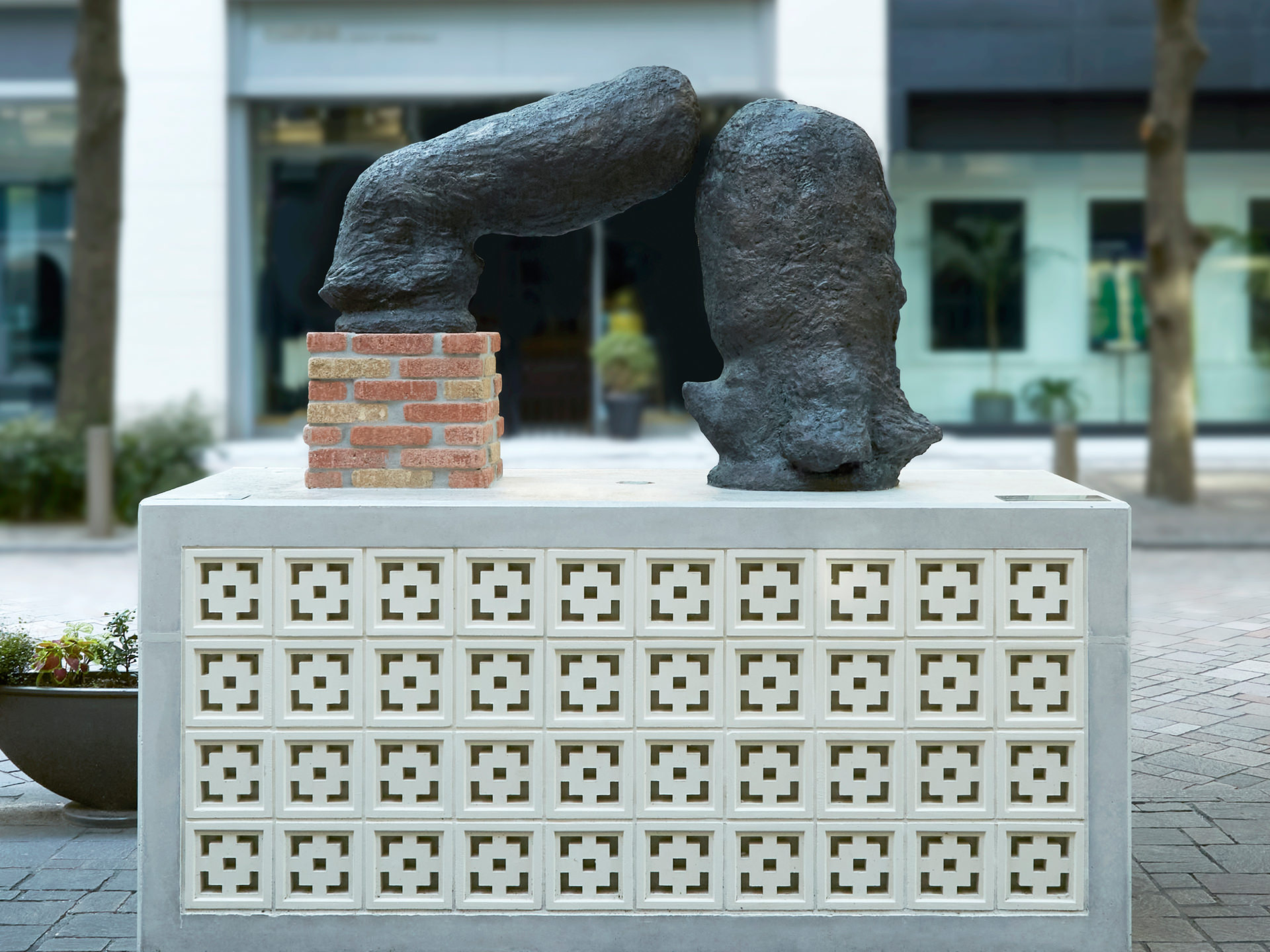——How did the collaborative production progress?
P:
There was almost no discussion. Henri was working on it when I was sleeping, and I was working on it when he was sleeping. That's an opportunity for us to "change" each other.
H:
The parts that I thought were good were left in place, but when I woke up, they had been removed. I'm the type of person who makes things in a hurry, but I was always warned, ``Henri, don't be in too much of a hurry.'' Pierre prepares a lot by making many drawings and models in advance. He taught me how to think.
P:
When creating this work, I gave a lot of thought to the materials. Plaster, clay, pottery soil, stone...I think it was a good choice to use mortar in the end. When it's freshly kneaded, it's soft and feels like clay, but once it's hardened, it's like stone, so you have to hang it, and so on. I think that difficulty was the perfect point of contact between the two of us.
H:
With clay, you can change the shape at any time, so your body starts moving on its own, but with mortar it takes time, so you use your hands, head, and body. Traces of that kind of thinking remain throughout the sculptures.
P:
This may seem obvious to a sculptor (lol), but it was new and fun. When I translated this experience into my own personal production, there were many areas where I realized that I was running away from it. I would like to take this opportunity to go back to basics.
H:
What Shagyan is aiming for is "beginner's intention".
——What do you want people to see about Marunouchi?
H:
What I focused on was the relationship between the person with the hidden anger and the saint-like character. I would say it's a contrast between a young chubby person (Regent) and an experienced person (Afro) who has been to various venues. I hope it's something that conveys the communication between these two people more than the motifs and details.
I also want it to become a landmark that people walking on the street will remember, regardless of whether our intentions are conveyed or not. It's scheduled to be installed for three years, but when it's gone, it's the kind of thing that makes you feel sad. But wouldn't it be a relief if it disappeared? It's nice to see Yankee students who come from outlying areas on Travel take commemorative photos in front of it, or take shelter from the rain under the Regent (lol).
P:
It would be interesting if Regent came back again. It is said that the name "Regent" comes from the fact that the hairstyle (the part at the back of the head) resembles "Regent Street" in London when viewed from above, and Marunouchi-Nakadori Ave. is also a street like that. I want it.









